
Everything you need to know about Malaysia’s Kristang cuisine

Jun 30, 2025 • 5 min read
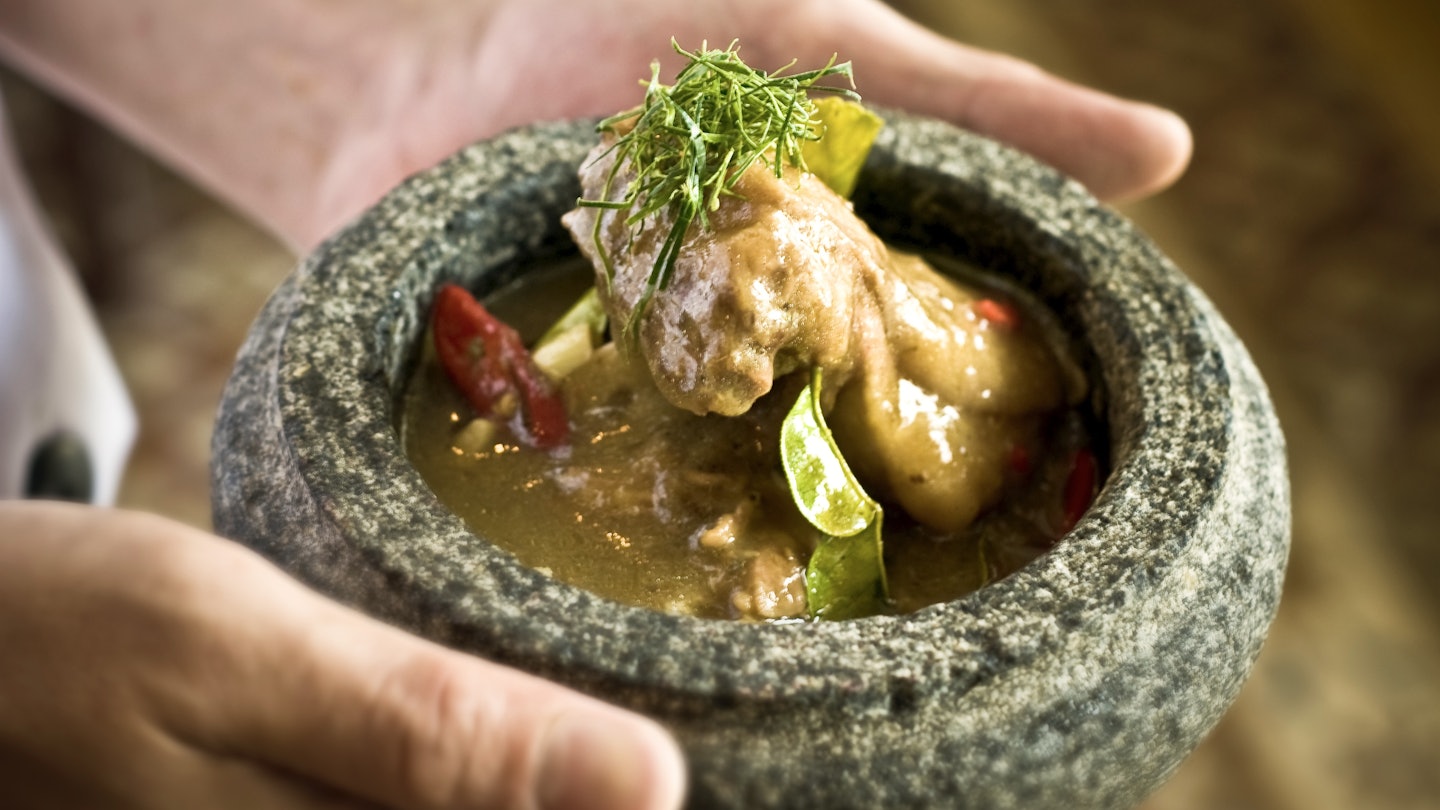
A serving of kari kurma (kurma curry). Originating in Melaka, Kristang cuisine dates back hundreds of years. The Majestic Malacca
Malaysian fare is arguably Asia’s best cuisine – and is certainly its most underrated.
Each of Malaysia’s vibrant cities has its signature dishes; famous ones include char kuey teow (a wok-fried noodle dish) from Penang, and salted chicken in Ipoh. And in the port city of Melaka, one of Malaysia’s most beloved cuisines is also among the world’s most unique.
Kristang (or Portuguese Eurasian) food is an addictive amalgamation of flavors that dates back hundreds of years, to when the Portuguese occupied Melaka.
“Imagine rich, coconut-based curries tinged with tangy tamarind, fiery sambals tempered with aromatic spices, and slow-cooked meats infused with vinegar and mustard seeds,” says Alvin Kessler, hotel manager at The Majestic Malacca and a Kristang community member. ”Every dish tells a story of seafaring explorers, bustling Malaccan trade routes and generations of Kristang families preserving their heritage through bold, soulful cooking.”
While Kristang dishes have proud Portuguese roots, don’t expect to see pastel de nata or a francesinha (Porto meat sandwich) on the menu here.
“It’s totally different from Portuguese food. We use a lot of chilis and shallots. It’s very close to the local Malay and Baba-Nonya ingredients,” says Martin Theseira, president of the Melaka Portuguese Eurasian Heritage Arts and Cultural Society. “We have our version of bacalao (dried and salted cod), which is also dried fish soaked in tamarind sauce, kept to ferment for a week and then fried. Some of these dishes are slowly fading – but we eat how our grandmothers and grandfathers used to eat.“
Here’s everything you need to know about one of the world’s most unique fusion cuisines, and where you can try it.
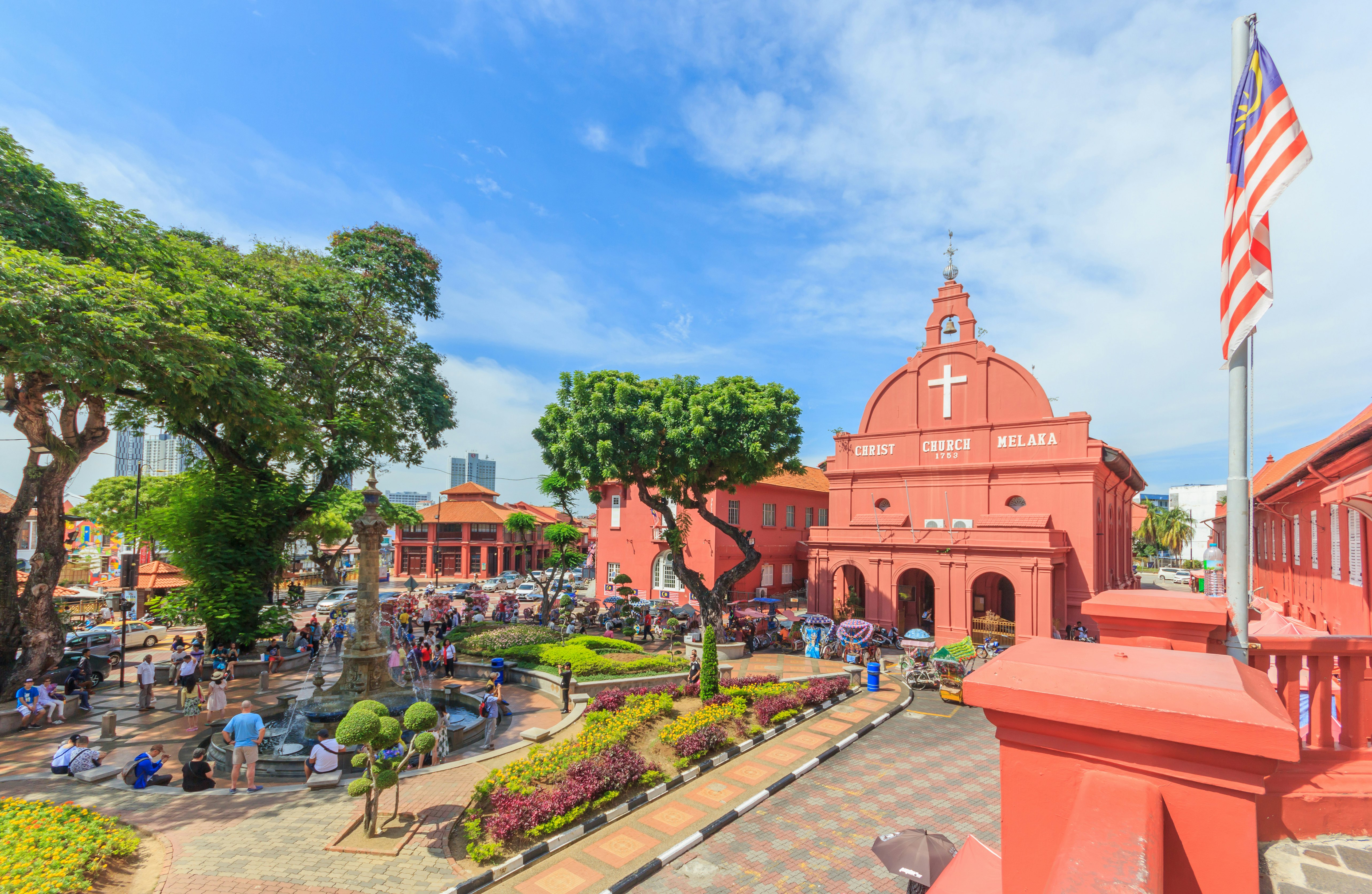
What is the history of Kristang cuisine?
Kristang derives from the word “Christian,” and refers to the Portuguese colonizers who landed in Melaka in 1509, ruling the town for the next 130 years. As the new arrivals began to assimilate, the term Kristang emerged as a catch-all to describe members of the community, as well as their religion, cuisine and Creole-style language (nearly extinct today).
For hundreds of years – and long after the Portuguese had been supplanted by the Dutch East India Company – Kristang families survived day to day, with men heading out on fishing boats and cooking whatever they brought home. Children harvested mangos from nearby trees, while women combed the seashore for prawns. These ingredients were combined to make tangy sambal – still a mainstay in Kristang cuisine. “We used simple ingredients from the garden and the sea,” says Theseira.
Most Kristang still live in Melaka’s Portuguese Settlement, a sector created in the 1930s that today has some 120 houses and several Kristang restaurants.
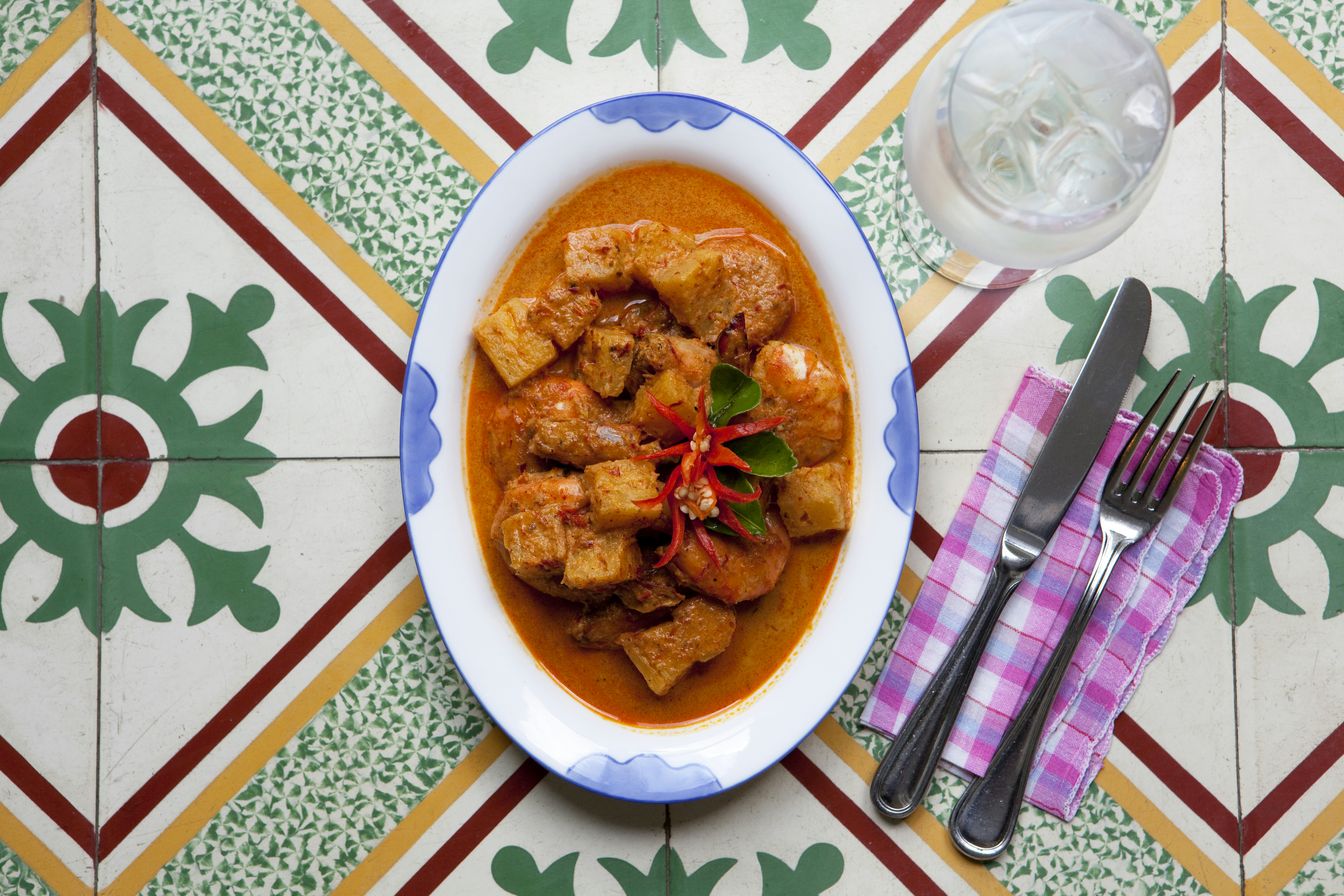
Which dishes exemplify Kristang cuisine?
Thanks to the oral tradition of passing down secret family recipes, no two Kristang dishes are the same. “Each dish is unique to the person who prepares them,” says Kristang chef Melba Nunis.
Favorites include fresh, locally caught fish, steamed, wrapped in banana leaf then covered in a spicy, fermented shrimp paste concoction known as belacan. A staple in Kristang food, sambal is made using this hand-made shrimp paste, plus chilis, turmeric and vinegar – resulting in a flavor profile that's both fishy and packed with umami.
“Kristang food offers a soulful, multicultural experience that reflects centuries of cultural fusion and deeply rooted traditions. Dishes blend with bright flavors and local spices, resulting in dishes like debal curry or ‘devil’s curry’ – a very spicy chicken curry,” says Nunis.
Unlike sweeter and creamier Malay or Peranakan (Baba-Nonya, or Straits Chinese) curries, Kristang curries use ingredients like candlenuts, galangal, mustard seed and vinegar – unleashing more-acidic flavors. Chef Nunis’ favorite dish is porku tambrinyu (pork cooked in tamarind). “It’s comfort food that reminds me of family and home,” she says.
What flavors should I expect in Kristang cuisine?
You’ll need a glass of water: chilis are probably the key ingredient in this cuisine – and they pack a fiery, throat-burning punch. But don’t let that scare you off, for all that heat is balanced with the acidity of tamarind and vinegar. Such bold components differentiate these dishes from the more delicate flavor combinations you’ll find in other Malaysian dishes.
Added to sauces, sambals and curries, garlic, onions and shallots are other key ingredients – adding up to a less sweet experience than in typical Malaysian cuisine. Pickled vegetables, mangos and salted fish are commonly used in side dishes and sambals for lip-puckering intensity.
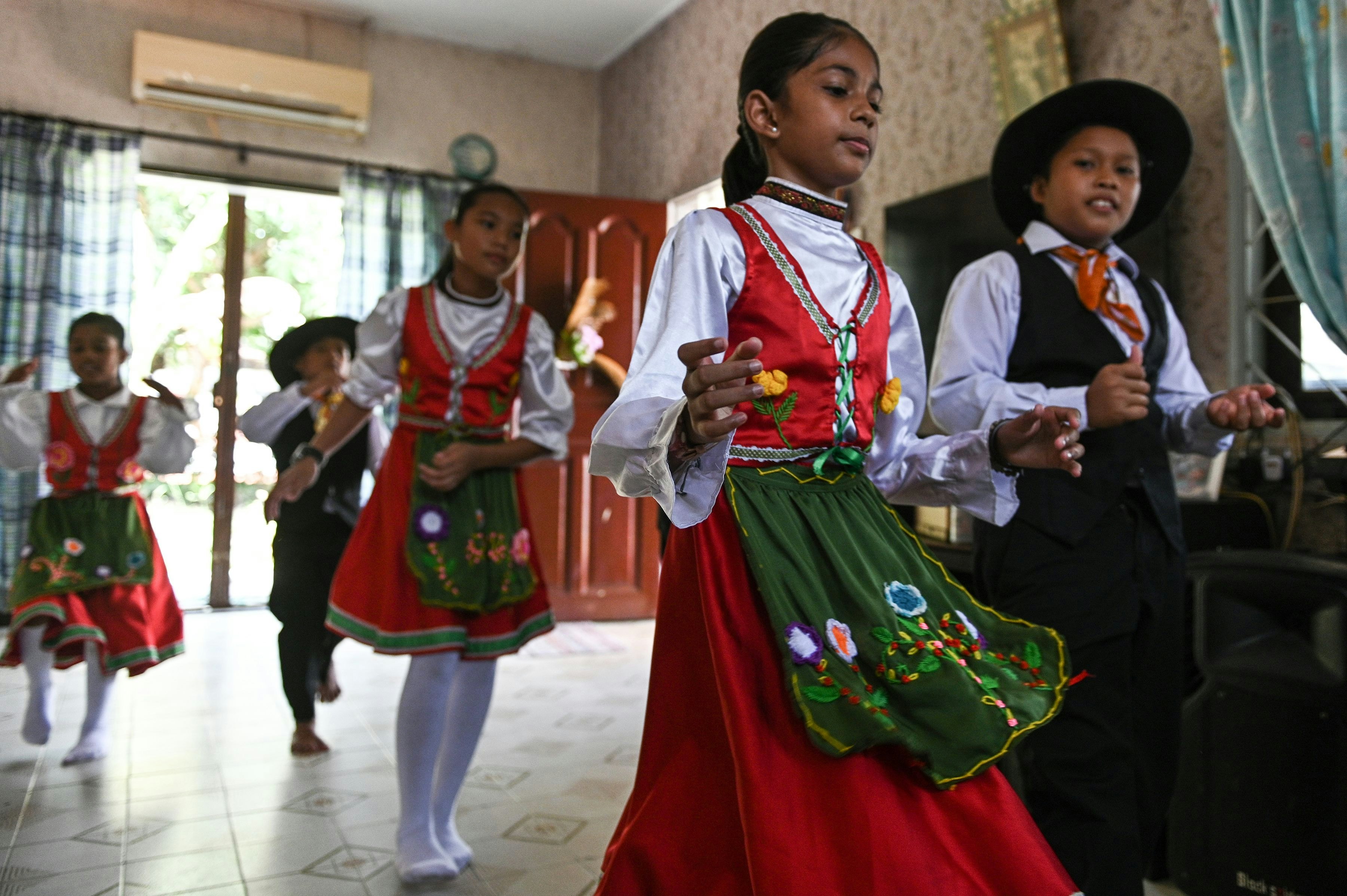
What are some traditions around Kristang cuisine?
Music and Kristang food go hand in hand. After you wash your hands, the musicians will come out – on special occasions, in traditional Portuguese costumes. Old-fashioned sailor ballads are frequently played at the end of dinner, and there’s plenty of Portuguese dancing, too.
Where can I try Kristang cuisine?
Praya Lane Kristang Experience
If you only try Kristang cuisine once, try it here, where Martin Theseira and his sister offer travelers home-cooked Kristang meals in a wooden house on Praya Lane. (Reserve ahead via Facebook messenger.) This narrow street is the last historical enclave of the Portuguese community and predates the neighboring Portuguese Settlement.
Family-style plates vary each night, but may include eggplant and onions doused in soy sauce and lime; baked rock snapper slathered in shallots, shrimp paste, candlenut and chili; and pork sebak, an addictive pork dish with chilis, raisins, vinegar and sugar. After you eat, expect to be serenaded by Martin and his ukulele.
Maureens Corner
Community members swear by Maureens, in the center of the Portuguese Settlement. This no-frills hawker stall cranks out beloved Kristang dishes, particularly catch-of-the-day seafood covered in various signature sauces. Grab one of the open-air tables and try the shrimp in tamarind sauce, and baked fish with a side of salt-and-pepper eggplant.
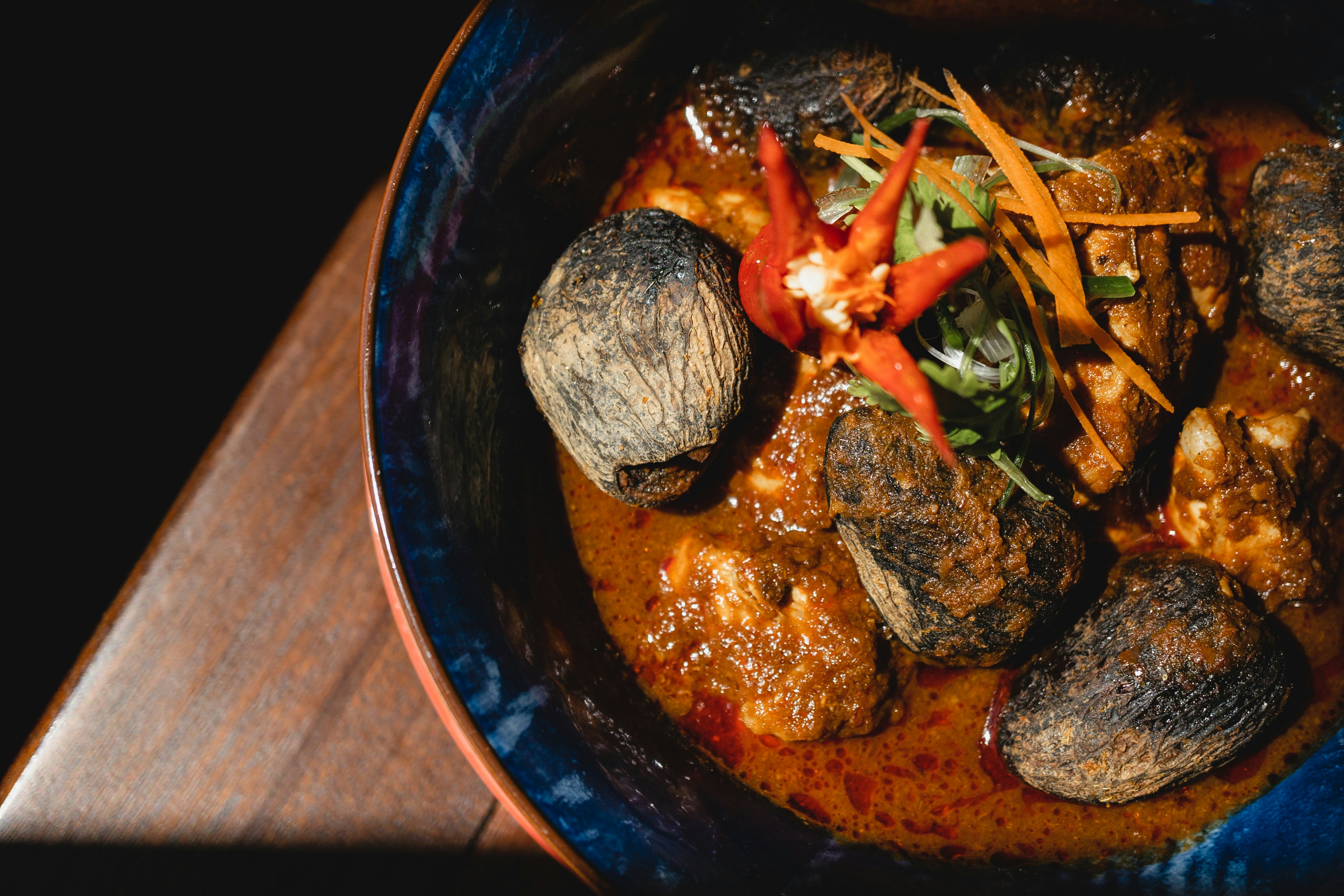
The Mansion
You’ll find this deluxe Kristang restaurant inside The Majestic Malacca, the city’s most famous five-star hotel. In a formal dining room, The Mansion serves up an encyclopedia of classic recipes, including manager Alvin Kessler’s favorite, curry seccu. “This rich, slow-cooked dish features tender meat – usually beef or chicken – simmered in sanchar, a thick, spiced gravy with roasted coconut, giving it a deep, nutty aroma,” he says. “For me, it represents the heartiness of Kristang cuisine – rooted in tradition, yet full of bold, layered flavors.” Guests staying at the hotel can also take a Kristang cooking class.
Kumi
In Kuala Lumpur, Kumi serves vibrant home-cooked Eurasian food in a minimalist dining room. Beloved menu items include otak-otak (fish covered in spicy shrimp paste and baked in a banana leaf) and mutton ketumbar (mutton served dry, cooked in coriander and chilis).













